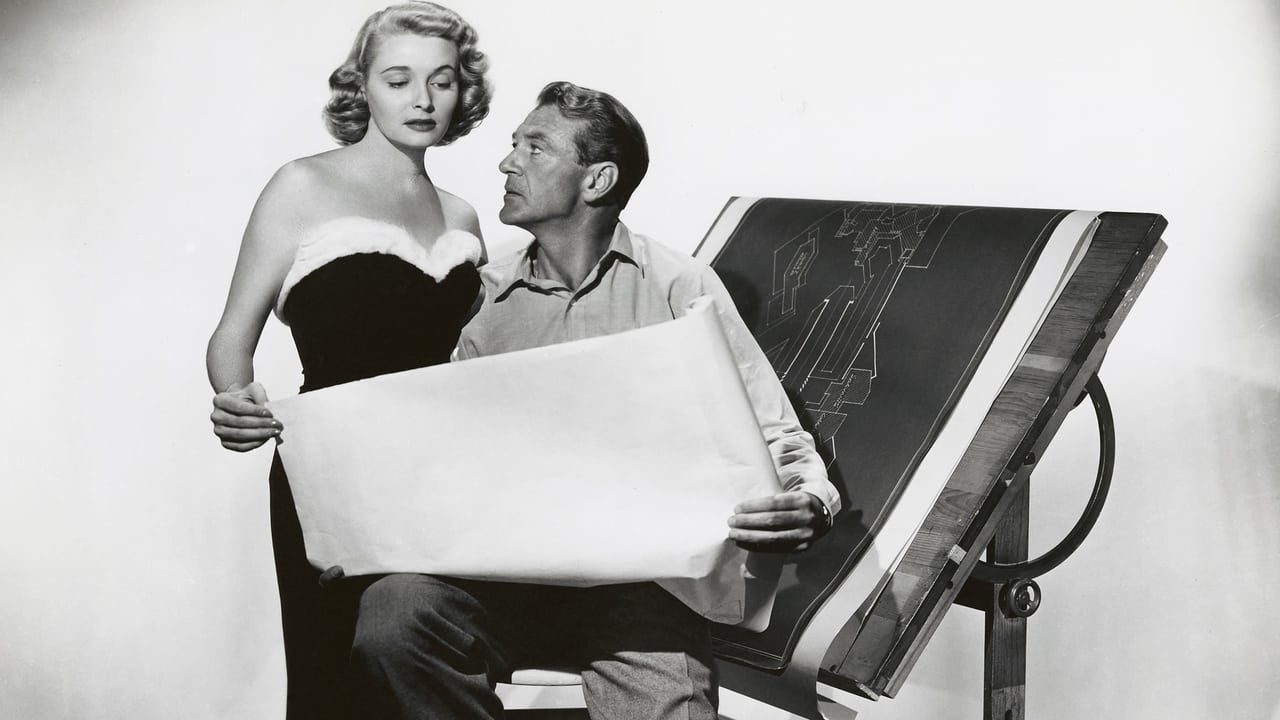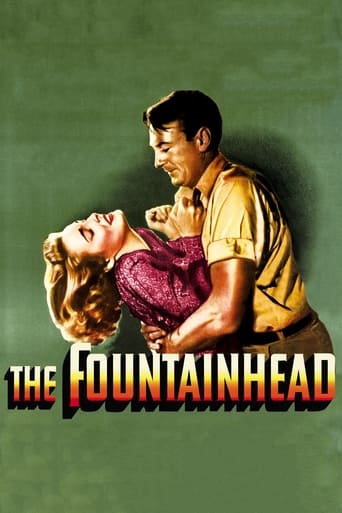

Please don't spend money on this.
... View MoreFantastic!
... View MoreWhile it doesn't offer any answers, it both thrills and makes you think.
... View More.Like the great film, it's made with a great deal of visible affection both in front of and behind the camera.
... View MoreI have long heard of the wisdom and cultural significance of Ayn Rand and "the Fountainhead." I finally had an opportunity and the time to watch it thanks to the library and "movie recycling" machine of TBS. The plot emphasizes the conflict between the Individual and Collective. It is pure ideological stupidity. What Ayn Rand describes as Individuality is egotism and stupidity. What she describes as the Collective is the symbiosis of the group for its mutual benefit. It is almost like she is fulfilling the dictum of Erik Hoffer in that the most fervent Communists become the most fervent anti-Communists. Except that she has no understanding of either Communism (which became an authoritarian attempt to replace the inherited royalty with criminals) versus Democracy where the leaders (and their wealth) are held accountable by the members of society. The acting sucks. The plot sucks. The sense of how and why people in society make economic decisions sucks. The value of seeing the movie is that it might be useful as a benchmark for ineptitude by anyone who advocates it or speaks highly of it.
... View MoreThere are many ways to watch this movie, and the way you choose to watch it will tend to determine how you rate it. You might compare it to the book, or set it against a standard of expression for a philosophical idea. Or, you just might watch it absolutely for itself, in a sort of self-defined manner. Everything depends upon the standard of judgment.I admit that there were parts of this movie that seemed awkward or condensed from a story perspective. However, such as each his or her own, we tend to like a movie that hooks us, often by attaching to something inside ourselves. Something in the movie with which we identify.What I loved about the movie is the essential message: the man's own belief in himself was a stronger force than the attacks could break down. Make the man an outcast, ridicule him, take his money. Take away everything society offers. Then we see what makes the man. Such as it was for Socrates, Jesus, and many others. Take it all away and there is nothing left, but the man and the principle that the man holds. This is the integrity of the man, and it is what holds the man together, from the inside out, not the outside in.The strength of the many is not the truth, the strength of the many is simply the many. The truth can stand alone, naked, and all by itself. The less adorned, the more essential. All strength comes from the inside, that is the only true source of strength, and nothing is as strong if reliant upon an external.Roark listens to the kingdom that is inside of him, and he wins without ever attacking, simply by staying true to himself.
... View MoreThis flick is as good as riveting drama gets. It is truly a battle between good and evil. It's a battle between heroes and villains. It's a battle between uncompromising people and those who arrogantly feel they can "improve" on another's creations. It's a love story unlike anything ever filmed. Astonishingly enough it's story of what happens when evil encounters uncompromising integrity and changes for the better. It's a story of how evil can destroy good. It's a story of how good can destroy evil. It's a story of the battle between creators and those parasites who would destroy them. It's a battle between individuals and the collective population that wants to destroy them.It may sound a bit odd to say this, but take away the space ships, light sabers and other special effects and it's a little like Star Wars.
... View MoreI love Ayn Rand's novel, but this film version is unfortunately a mixed bag. Just a quick capsule review:The Good:* Rand's screenplay was excellent (she was a screenwriter in Hollywood, earlier in her career, and also wrote a number of plays, so unlike some authors who butcher their own work, hers was excellent. And her contract guaranteed it was basically shot as she wrote it.) That said though, a movie this short is just *too* short to really do the novel justice; for example, the character of Peter Keating, who even has an entire 1/4th of the book named for him, is only in a few brief scenes in the movie.* Raymond Massey's portrayal of Gail Wynand. Massey understood the character, and really gave me that great sense of being what I had imagined from the book. (That same great joy most of us got from the characters in Jackson's LOTR movies...)The OK:* many have complained about Patricia Neal, but I liked her as Dominique--and that ahem "infamous" scene (that I shall not spoil) was really something shocking at that time in cinema!The Bad:* even though Rand selected Cooper, he was really way too old to play Roark by the time this was made into a movie--you almost feel like laughing in the first scene when the dean is telling a 40++something man that he is being kicked out of college. Cooper also seemed to fall into the trap of thinking that a man of reason is like Spock--devoid of emotion. And even though the courtroom speech is great, you didn't get the sense he really understood it.* a property of this immense stature deserved a big budget, color film--the production itself was obviously low-budget, with many obvious miniatures shots that even at that time should have been much better doneThe Ugly:* oh, dear, the Toohey character was so off the mark, they could have used it later to fuel the moon landings--in the book, Toohey is refined, witty, slender--even frail-- the very embodiment of a self-effacing, humble intellectual. In the movie, he is a crude, arch caricature, with a long cigarette holder, stout belly, booming domineering demeanor, just oozing "evil autocrat" from the first frameSummary:Overall, despite its flaws, I have to say I did thoroughly enjoy The Fountainhead--the core of the story is there, and the condensation struck the right balance between drama and ideas, keeping both in balance, while selecting the key aspects of each from the much deeper and longer novel. So I have no hesitation in recommending it, although I would strongly suggest reading the novel first, then watching the movie.
... View More